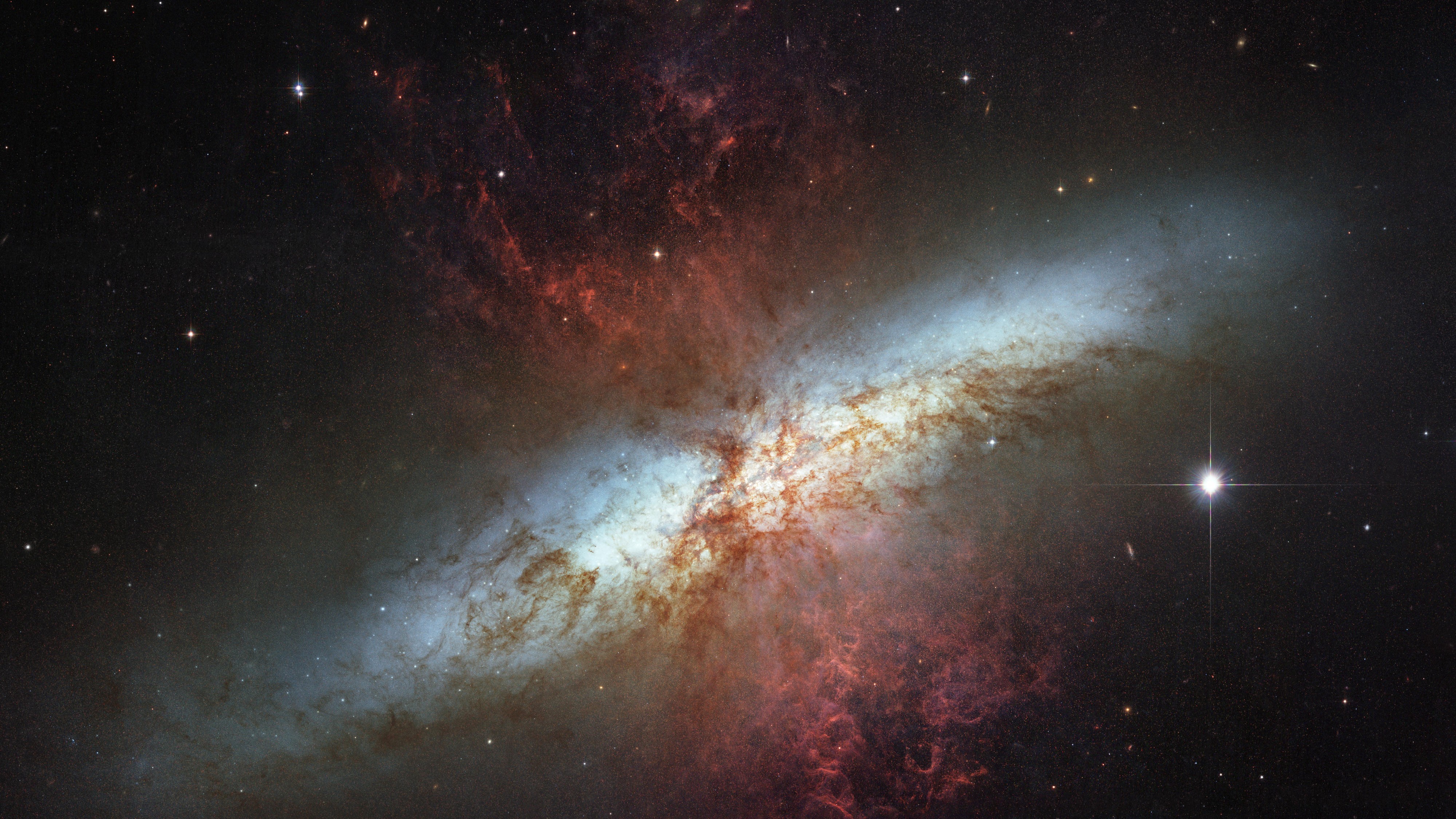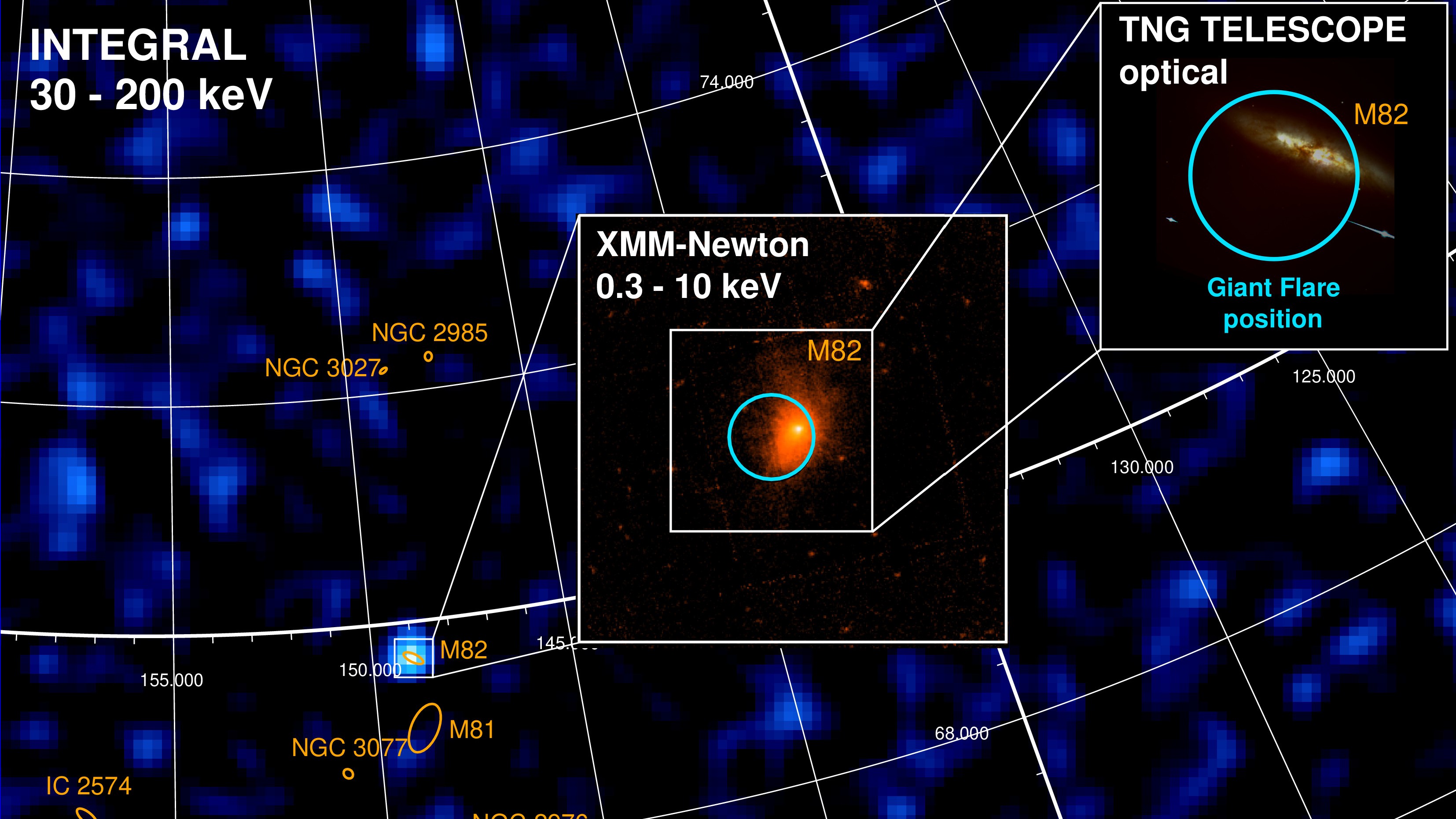Enormous explosion in 'Cigar Galaxy' reveals rare type of star never seen beyond the Milky Way
An incredibly brief, ultrabright explosion has led astronomers to a newfound magnetic star outside the Milky Way, which could be the first of many extragalactic magnetars, according to new research.

An ultrabright explosion has led astronomers to find the first magnetic star to be discovered outside the Milky Way — and there could be many more out there.
The newfound magnetar, a dense relic of a once-bright star with a remarkably strong magnetic field, resides in the galaxy M82 (dubbed the Cigar Galaxy), roughly 12 million light-years from Earth. Scientists using a European Space Agency (ESA) telescope spotted the ultramagnetic star after it violently erupted and blasted out intense energy that lasted just a fraction of a second, according to a new study published Wednesday (April 24) in the journal Nature.
Sometimes called the universe's most powerful magnets, magnetars are rapidly spinning, intensely magnetized versions of neutron stars — remnants of supernova explosions — that shine thousands of times brighter than the sun. However, their eruptions are so fleeting and unpredictable that they are tricky targets for astrophysicists to study. Only three other magnetar flares have been recorded in the past 50 years, so the latest find opens the search for more extragalactic magnetars, scientists say.
"If we can find many more, we can start to understand how often these flares happen and how these stars lose energy in the process," Ashley Chrimes, an ESA researcher who wasn't directly involved with the new study, said in a statement.
Related: Bizarre new cosmic object is the most magnetic star in the universe
A star that had a blast
In mid-November 2023, ESA's Integral space telescope flagged a brief, sudden flare of gamma-rays in the direction of M82. Similar radiation also blasts out during the births of black holes, mergers of orbiting neutron stars, and other exotic phenomena unrelated to magnetars.
"We immediately realized that this was a special alert," Sandro Mereghetti, a researcher at the National Institute for Astrophysics in Italy and the lead author of the new study, said in the statement. "Gamma-ray bursts come from far away and anywhere in the sky, but this burst came from a bright nearby galaxy."
Get the world’s most fascinating discoveries delivered straight to your inbox.
Follow-up observations of the burst with ground- and space-based telescopes a few hours later localized its position within M82. Instead of the fading afterglow and gravitational waves that would be expected from a common gamma-ray burst, astronomers saw only hot gas and stars, which confirmed that the flare came from a magnetar, according to the study.
The so-called starquake, caused when a magnetar's intense magnetic fields ever-so-slightly break the star's spin and disrupt its outer layers, cracked the star's surface and beamed out highly energetic gamma-rays across the universe explains the detected flare, astronomers said.
"If the [follow-up] observations had been performed even just a day later, we would not have such strong proof that this was indeed a magnetar and not a gamma-ray burst," Jan-Uwe Ness, the project scientist for ESA's Integral mission, said in the statement.
The latest discovery adds to the three magnetars that were previously found within our galaxy. These include a notable one spotted in 2004, which, despite being located halfway across the galaxy, was close enough that its radiation briefly washed over our planet and temporarily shut down several spacecraft. The newfound magnetar, however, is so far away that it is extremely unlikely to impact Earth.

Sharmila Kuthunur is an independent space journalist based in Bengaluru, India. Her work has also appeared in Scientific American, Science, Astronomy and Space.com, among other publications. She holds a master's degree in journalism from Northeastern University in Boston. Follow her on BlueSky @skuthunur.bsky.social

